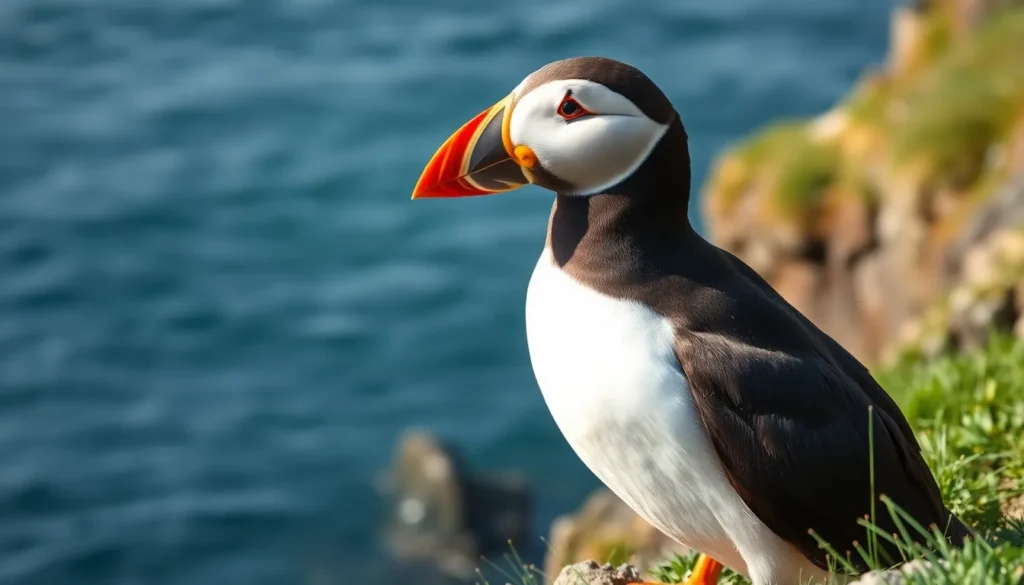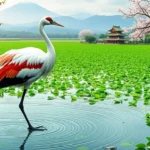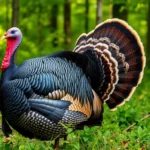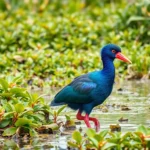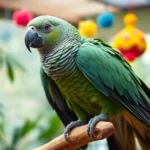When we think of adorable seabirds, puffins immediately capture our hearts with their distinctive colorful beaks and endearing waddle. These charismatic “sea parrots” aren’t just cute faces – they’re remarkable marine athletes that spend most of their lives soaring above frigid ocean waters and diving deep beneath the waves.
We’ve discovered that puffins possess incredible abilities that’ll leave you amazed. From their lightning-fast underwater hunting skills to their impressive cliff-dwelling communities, these birds have mastered survival in some of Earth’s harshest coastal environments. Their vibrant orange and red beaks aren’t just for show either – they serve crucial purposes we’ll explore.
Whether you’re a seasoned birdwatcher or simply curious about nature’s most photogenic seabirds, we’re about to jump into the intriguing area of puffins. You’ll learn why these stocky little birds have become conservation icons and discover surprising facts that make them truly extraordinary members of the auk family.
Physical Characteristics of Puffins Bird
Puffins possess remarkable physical features that make them instantly recognizable among seabirds. These distinctive traits enable their success as marine hunters while providing the iconic appearance that captivates bird enthusiasts worldwide.
Distinctive Beak and Coloration
Triangular beaks represent the most striking feature of puffins during breeding season. Orange, red, and yellow hues create vibrant patterns across their beaks from April through August. Adults develop bright orange webbed feet and legs that complement their colorful facial features.
Black and white plumage creates a tuxedo-like appearance that distinguishes puffins from other seabirds. White bellies contrast sharply with dark backs and wings. Bright orange-red eye rings surround their dark eyes during breeding season.
Serrated edges along their beaks allow puffins to grip multiple fish simultaneously. Atlantic puffins can carry up to 12 small fish crosswise in their beaks without dropping previously caught prey.
Size and Body Structure
Compact bodies measure 10 to 11.5 inches in length among adult puffins. Weight ranges from 17 to 23 ounces depending on the subspecies and season. Wingspan extends 21 to 24 inches across when fully spread.
Stocky builds provide excellent stability in rough ocean conditions. Short necks connect proportionally large heads to robust bodies. Dense bones enable efficient underwater diving even though their small stature.
Webbed feet function as both swimming paddles and landing gear on rocky clifftops. Orange coloring intensifies during breeding months and fades to duller yellow tones in winter.
Seasonal Plumage Changes
Winter plumage transforms puffins into notably different-looking birds. Gray replaces the bright white facial feathers from September through March. Beaks lose their vibrant orange coloration and shrink to smaller, duller triangular shapes.
Facial discs become darker and less defined during non-breeding months. Young puffins maintain subdued coloring throughout their first year before developing full adult breeding plumage.
Molting occurs annually between August and September when puffins shed their colorful beak sheaths. New growth begins immediately but doesn’t reach full brightness until the following spring breeding season.
Habitat and Distribution
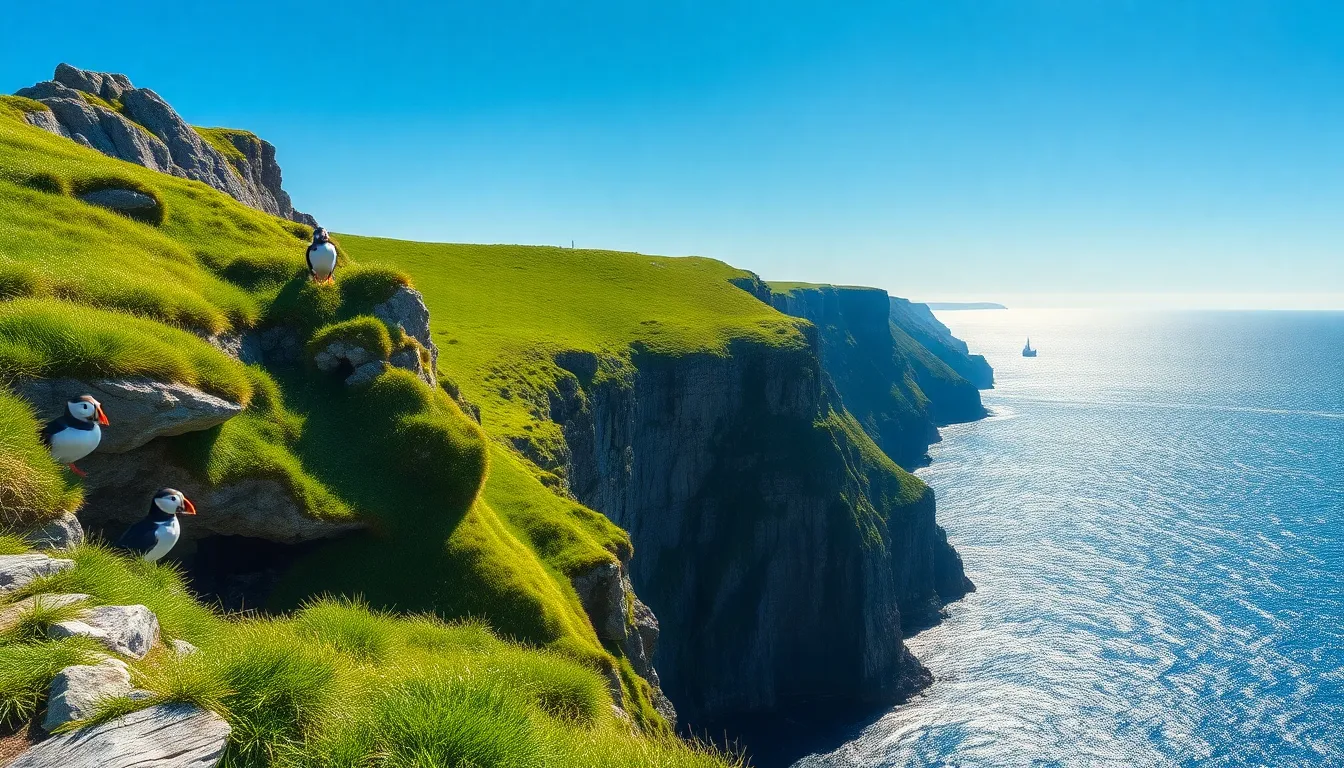
Puffins inhabit exact marine environments across the North Atlantic region where cold ocean currents create ideal feeding conditions. These remarkable seabirds select precise coastal locations that provide both nesting security and abundant food sources.
North Atlantic Breeding Grounds
Atlantic puffins establish breeding colonies exclusively along the North Atlantic coastline from April through August. Major breeding populations thrive in Iceland (hosting 60% of the industry’s Atlantic puffins), the Faroe Islands, Scotland’s offshore islands, and select coastal areas of Norway. Smaller colonies exist along the coasts of Ireland, Wales, and eastern Canada including Newfoundland.
Iceland’s Westman Islands support approximately 4 million breeding pairs during peak season. Scotland’s remote islands like Skye, Orkney, and the Shetlands host important populations exceeding 500,000 pairs combined. These breeding grounds provide the exact environmental conditions puffins require for successful reproduction.
Coastal Cliff Preferences
Puffins select steep coastal cliffs with grassy tops for their nesting requirements. These seabirds excavate burrows 2-3 feet deep in soft soil atop cliff faces that range from 50-400 feet above sea level. Clifftop terrain must contain sufficient soil depth for burrow construction while offering direct ocean access below.
Preferred nesting sites feature:
- Grassy clifftop surfaces with loose, well-drained soil
- Steep cliff faces providing protection from land predators
- Close proximity to productive fishing waters within 10 miles
- Minimal human disturbance during the breeding season
Remote islands and isolated headlands meet these exact habitat criteria most effectively.
Migration Patterns
Puffins demonstrate remarkable migration behaviors that span thousands of ocean miles annually. After breeding season concludes in late August, these seabirds disperse across the North Atlantic for winter feeding periods. Adult puffins migrate to areas including the Bay of Biscay, waters off Portugal and Morocco, and the mid-Atlantic ridge.
Young puffins remain at sea for 4-6 years before returning to breeding colonies. During winter months, puffins live entirely on the open ocean surface, feeding on small fish and marine organisms. Migration distances vary by colony location, with Icelandic populations traveling up to 3,000 miles to reach winter feeding areas.
Tracking studies reveal that puffins return to their exact natal colonies with 95% accuracy using magnetic navigation and oceanographic cues.
Diet and Feeding Behavior

Puffins demonstrate remarkable feeding adaptations that make them exceptional marine hunters. Their specialized diet and hunting behaviors have evolved to maximize success in the nutrient-rich waters of the North Atlantic.
Primary Food Sources
Fish comprise 90% of the puffin bird diet throughout their lives. Small schooling fish represent their preferred prey, with sand eels (Ammodytes species) making up 60-80% of their total food intake during breeding season.
Herring forms another crucial component, particularly fish measuring 2-6 inches in length. Capelin, sardines, and anchovies supplement their fish diet when primary species become scarce. Marine worms and small crustaceans provide additional protein sources, especially during winter months when fish availability decreases.
Zooplankton serves as supplementary nutrition during extended ocean migrations. Adult puffins consume approximately 40-50 fish per day during peak feeding periods, with each fish weighing between 3-15 grams.
Hunting Techniques
Underwater pursuit diving defines the puffin bird hunting strategy. These seabirds dive to depths of 200 feet, using their wings as underwater propulsion systems to chase schooling fish. Their compact bodies and dense bones allow them to remain submerged for up to 60 seconds during hunting expeditions.
Wing-propelled swimming enables puffins to reach underwater speeds of 4-5 mph while pursuing prey. Their streamlined bodies reduce drag, allowing precise maneuvering through dense fish schools. Surface diving from flight occurs when puffins spot fish concentrations from above, plunging directly into feeding areas.
Cooperative hunting behaviors emerge when multiple puffins target the same fish school. Groups of 10-15 puffins often hunt together, creating feeding frenzies that maximize capture success for all participants.
Feeding Young Pufflings
Adult puffins transport multiple fish simultaneously to their burrow nests using their specialized serrated beaks. Parents carry 8-12 small fish crossways in their beaks, with record observations showing up to 29 fish in a single trip.
Fish delivery occurs 4-8 times daily during the 38-44 day fledgling period. Both parents alternate fishing responsibilities, with one adult remaining at the burrow while the other hunts at sea. Peak feeding activity happens during early morning and late evening hours when fish schools move closer to surface waters.
Nutritional requirements increase as pufflings grow, with parents providing fish totaling 40-60% of the chick’s body weight daily. Sand eels remain the primary food source for young puffins, comprising 75-85% of delivered prey during the critical growth phase.
Breeding and Life Cycle
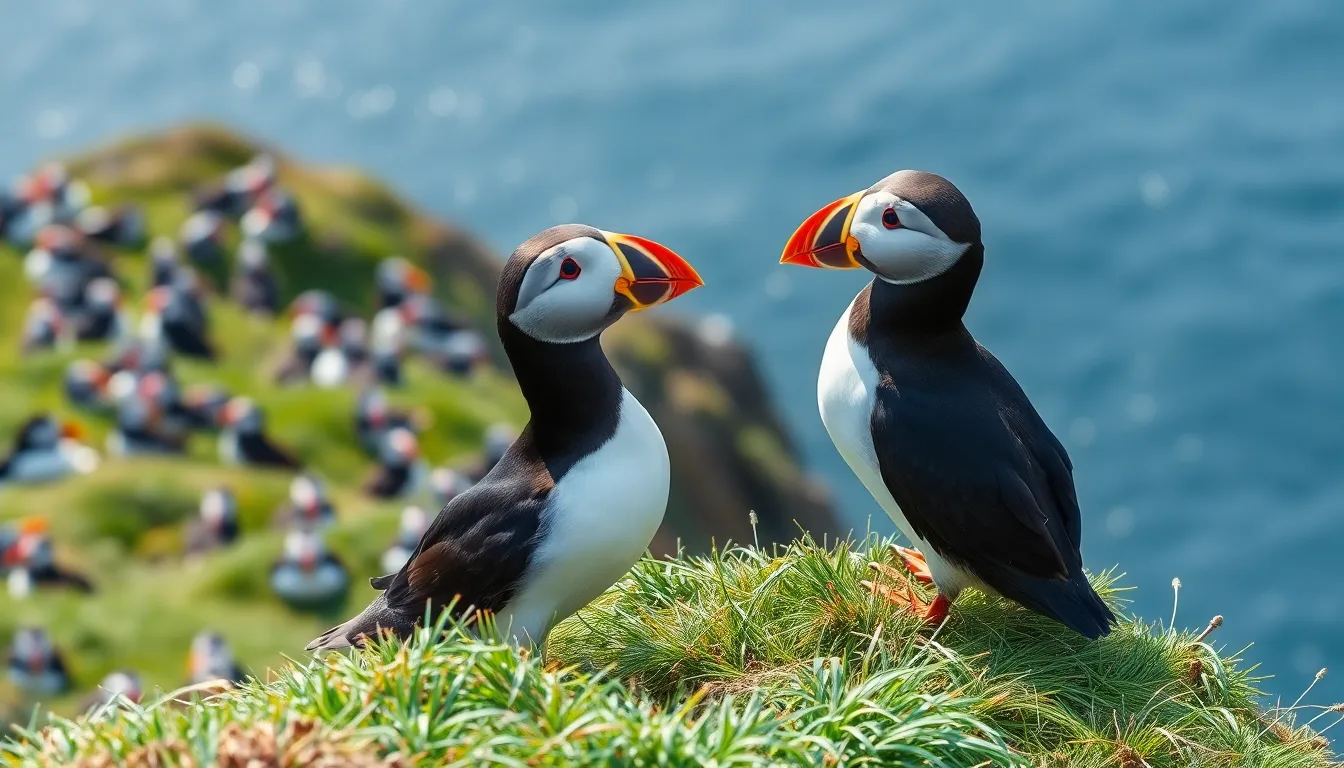
Puffins demonstrate remarkable breeding behaviors that showcase their strong pair bonds and exceptional parental care. These seabirds typically breed between April and August along their North Atlantic coastal colonies.
Mating Rituals and Pair Bonding
Puffins return to their natal breeding colonies at age 4-6 years old to begin their reproductive journey. Males arrive first at breeding sites and establish territories by selecting suitable burrow locations on grassy clifftops. Courtship displays include “billing” where potential mates rub their colorful beaks together in synchronized movements.
Pairs engage in mutual preening sessions and perform synchronized swimming displays in nearby waters. Established puffin couples often reunite at the same breeding site annually, demonstrating strong mate fidelity with over 80% of pairs maintaining long term bonds. Partners share territorial defense responsibilities and work together to excavate or renovate their nesting burrows.
Nesting in Burrows
Puffins excavate tunnel shaped burrows measuring 2-3 feet deep in soft soil atop coastal cliffs. Both partners use their strong beaks and webbed feet to dig these underground chambers, which provide protection from predators and harsh weather conditions. Each burrow features a single nesting chamber lined with grass, feathers, and other soft materials.
Breeding pairs often return to the same burrow location year after year, making renovations and improvements to their underground home. Colonies contain hundreds to thousands of individual burrows, creating bustling puffin neighborhoods across clifftop terrain. The female typically lays one white egg weighing approximately 60 grams in late May or early June.
Raising Pufflings
Puffin parents alternate incubation duties for 39-43 days until their single chick hatches. The newly hatched puffling remains in the burrow for 38-44 days while both parents provide continuous care and feeding. Adults make multiple fishing trips daily, returning with beaks full of small fish to nourish their growing offspring.
Parents deliver 8-12 fish per feeding trip, with each puffling consuming approximately 2,000 fish during the nesting period. The chick develops waterproof plumage and flight capabilities while remaining hidden in the protective burrow environment. Fledgling puffins leave their burrows at night to avoid predators, making their maiden flight directly to the ocean where they remain for 3-5 years before returning to breed.
Conservation Status and Threats
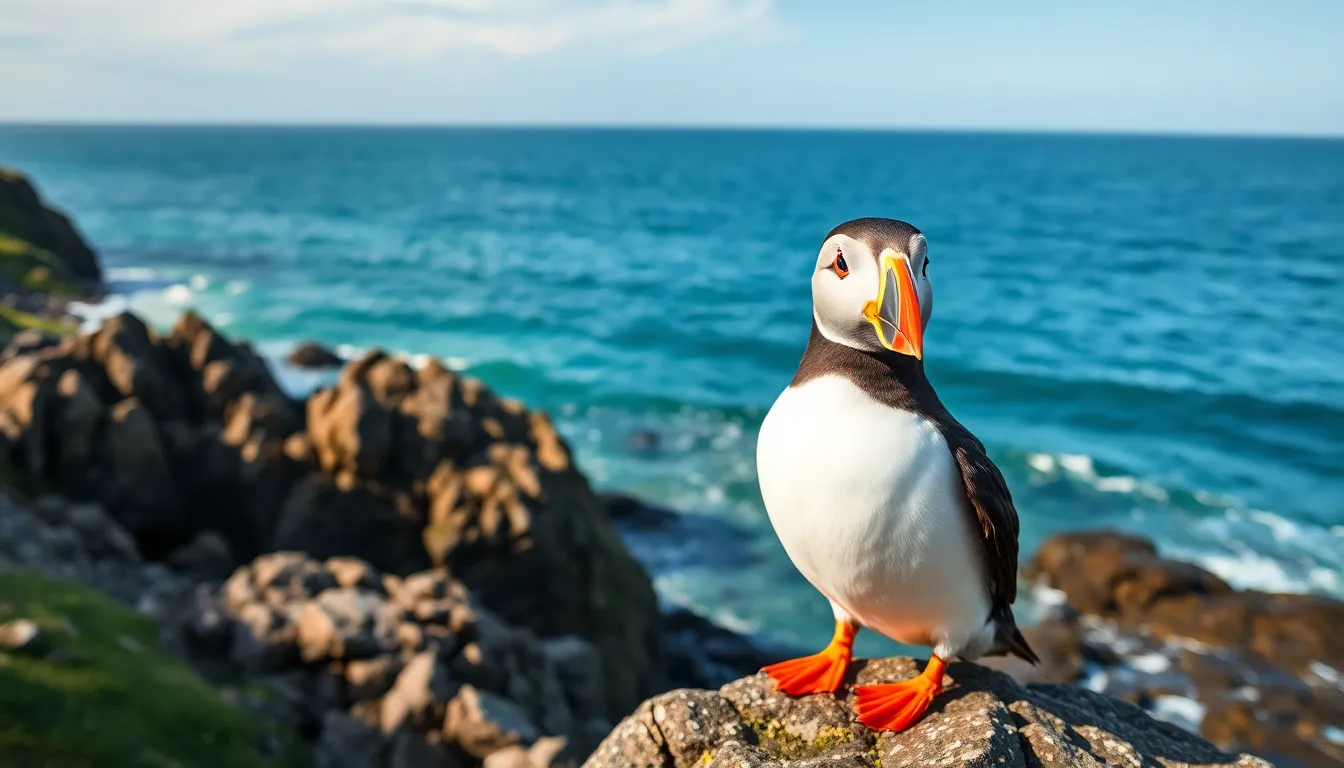
Puffins face mounting conservation pressures across their North Atlantic range, with populations experiencing important declines over the past several decades. Current research indicates these charismatic seabirds confront multiple threats that jeopardize their breeding success and long-term survival.
Population Decline Factors
Overfishing represents the primary threat to puffin populations, drastically reducing their essential food sources. Commercial fishing operations target sand eels, herring, and other small fish species that comprise 90% of the puffin diet, creating direct competition for these marine resources.
Habitat degradation affects breeding colonies through coastal development and human disturbance. Tourist activities during breeding season disrupt nesting behaviors, while infrastructure development eliminates suitable cliff-top burrow sites.
Introduced predators pose severe risks to puffin colonies on many islands. Rats consume eggs and chicks in burrows, while cats kill adult birds and fledglings, with some colonies experiencing up to 60% breeding failure rates due to predation.
Pollution impacts puffin health through plastic ingestion and oil spills. Adult puffins mistake small plastic debris for fish, feeding contaminated materials to their chicks, which causes digestive blockages and reduced growth rates.
Climate Change Impact
Rising ocean temperatures alter marine ecosystems, forcing fish populations to migrate to deeper, cooler waters beyond puffin diving capabilities. Water temperature increases of 2-3°C shift sand eel distributions northward, leaving traditional fishing grounds depleted.
Sea level rise threatens low-lying breeding colonies, with storm surge intensification eroding cliff faces and flooding burrow systems. Extreme weather events destroy nesting sites and reduce breeding success by 30-40% during severe storm years.
Ocean acidification reduces prey availability by affecting plankton populations that support the marine food web. Lower pH levels disrupt calcium carbonate formation in shellfish and reduce overall fish productivity in puffin feeding areas.
Seasonal timing mismatches occur when warming temperatures cause fish spawning to peak before puffin chicks hatch. This temporal disconnect reduces food availability during critical feeding periods, resulting in higher chick mortality rates.
Conservation Efforts
Protected area designation safeguards critical breeding habitats across the North Atlantic. Marine protected areas restrict fishing activities near major colonies, while terrestrial reserves protect nesting sites on islands and coastal cliffs.
Predator control programs successfully remove invasive species from breeding islands. Rat eradication projects on Scottish islands increased puffin breeding success by 70%, demonstrating the effectiveness of targeted predator management.
Monitoring programs track population trends and breeding success across multiple colonies. Annual surveys provide essential data for conservation planning, with citizen science initiatives captivating volunteers in data collection efforts.
International cooperation coordinates conservation strategies across puffin range countries. The Arctic Council and North Atlantic seabird working groups help research sharing and establish consistent protection measures between Iceland, Norway, Scotland, and Canada.
Fishing industry partnerships develop sustainable practices that protect puffin prey species. Quota adjustments for sand eel fisheries and seasonal fishing restrictions during puffin breeding periods help maintain adequate food supplies for growing chicks.
Best Places to Observe Puffins Bird
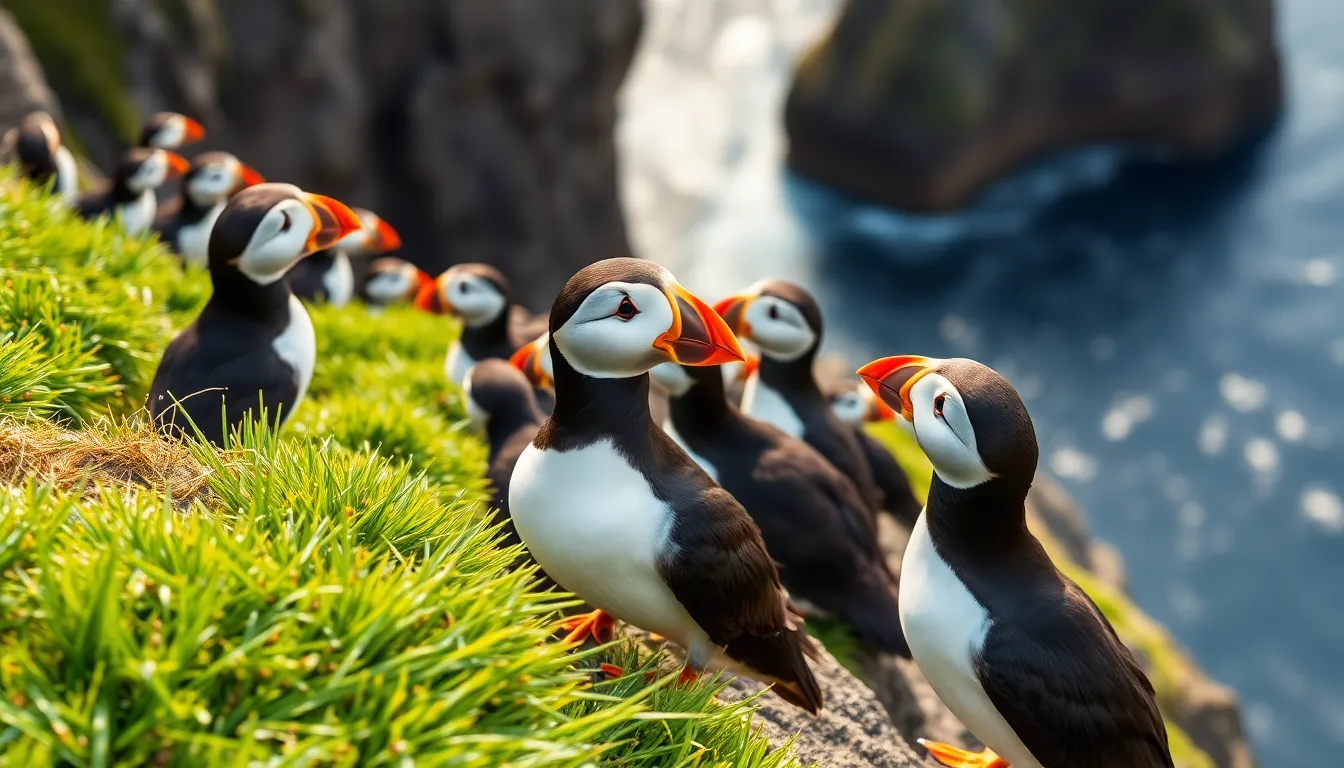
Observing puffins in their natural habitat offers wildlife enthusiasts extraordinary opportunities to witness these remarkable seabirds up close. We’ve identified prime locations and optimal timing for unforgettable puffin encounters across the North Atlantic.
Top Viewing Locations
Iceland hosts the industry’s largest puffin colonies, with Westman Islands supporting over 4 million breeding pairs annually. Látrabjarg cliffs extend 14 kilometers along the western coastline and provide exceptional viewing opportunities from May through August.
Scotland offers multiple premier puffin destinations across its coastal regions. Isle of May in the Firth of Forth accommodates 69,000 breeding pairs, while Bempton Cliffs in Yorkshire feature observation platforms positioned 400 feet above the North Sea. Bass Rock supports 150,000 gannets alongside important puffin populations.
Faroe Islands provide intimate puffin encounters with minimal tourist crowds. Mykines island maintains traditional grass roof houses and offers guided walks to cliff edge colonies. Streymoy and Vágar islands feature accessible viewing points along dramatic coastal formations.
Ireland showcases spectacular puffin colonies along its western and southern coasts. Skellig Michael, a UNESCO Industry Heritage site, hosts 4,000 breeding pairs on ancient monastery ruins. Great Saltee Island off County Wexford supports diverse seabird communities including substantial puffin populations.
Norway presents Arctic puffin experiences along its extensive coastline. Runde island accommodates 100,000 seabird pairs with dedicated visitor facilities. Lofoten Islands offer midnight sun viewing conditions during peak breeding months.
Eastern Canada provides North American puffin observations in Newfoundland waters. Witless Bay Ecological Reserve protects 260,000 seabird pairs across four islands. Machias Seal Island offers guided tours with close range photography opportunities.
Optimal Viewing Seasons
Peak breeding season occurs from April through August when adult puffins display vibrant orange beaks and engage in courtship behaviors. Colony populations reach maximum density during May and June as pairs establish territories and begin nesting activities.
Early season observations from April through May showcase elaborate mating displays and territorial establishment. Adult puffins arrive at colonies with full breeding plumage and begin excavating or refurbishing burrows from previous years.
Mid season viewing from June through July offers consistent colony activity with regular feeding trips and chick rearing behaviors. Parents make 8-12 fishing trips daily, providing excellent opportunities to observe their distinctive fish carrying techniques.
Late season encounters during August feature fledgling activities as young puffins prepare for ocean departure. Adult birds maintain reduced colony presence while continuing to support developing chicks in underground burrows.
Weather considerations significantly impact viewing success across all puffin colonies. Clear conditions with minimal wind provide optimal photography and observation opportunities, while fog and storms can restrict access to coastal viewing areas.
Conclusion
These remarkable seabirds continue to capture our hearts with their endearing personalities and incredible adaptations to marine life. Through our exploration we’ve discovered that puffins represent far more than just cute coastal birds – they’re indicators of ocean health and vital components of North Atlantic ecosystems.
We encourage you to experience these magnificent creatures firsthand by visiting their breeding colonies during peak season. Whether you choose Iceland’s dramatic coastlines or Scotland’s rugged cliffs you’ll witness nature’s resilience and beauty in action.
Our collective responsibility to protect puffin populations has never been more critical. By supporting conservation initiatives and sustainable fishing practices we can ensure future generations will continue to marvel at these colorful ambassadors of the sea soaring above Atlantic waters.
Frequently Asked Questions
What are puffins and what makes them unique?
Puffins are charming seabirds known for their distinctive triangular beaks that display vibrant orange, red, and yellow colors during breeding season. They have a tuxedo-like appearance with black and white plumage, bright orange webbed feet, and unique serrated beaks that allow them to grip multiple fish at once while hunting underwater.
Where do puffins live and breed?
Puffins inhabit the North Atlantic region, with significant populations in Iceland, the Faroe Islands, and Scotland. They prefer nesting on steep coastal cliffs with grassy tops, where they excavate burrows 2-3 feet deep. These marine environments provide ideal feeding conditions due to cold ocean currents.
When is the best time to see puffins?
The optimal viewing season for puffins is from April to August, with peak activity during May and June. This is when they engage in courtship and nesting behaviors at their breeding colonies. Clear weather days provide the best opportunities for observation and photography.
What do puffins eat and how do they hunt?
Fish make up 90% of puffins’ diet, with sand eels being their primary food source during breeding season. They use underwater pursuit diving techniques, reaching depths of 200 feet and using their wings for propulsion. Puffins can carry multiple fish at once thanks to their serrated beaks.
How do puffins breed and raise their young?
Puffins form strong pair bonds and typically breed between ages 4-6. They excavate protective burrow nests where females lay one white egg. Both parents alternate incubation duties for 39-43 days and share feeding responsibilities, making multiple fishing trips daily to deliver 8-12 fish per trip to their puffling.
Are puffins endangered and what threatens them?
Puffins face significant population declines due to overfishing of their prey species, habitat degradation, invasive predators like rats and cats, pollution, and climate change. These factors affect food availability, breeding success, and nesting site safety, making conservation efforts crucial for their survival.
Where are the best places to see puffins?
Top puffin viewing locations include Iceland’s Westman Islands, Scotland’s Isle of May, the Faroe Islands’ Mykines island, and Ireland’s Skellig Michael. These sites offer exceptional opportunities to observe puffins in their natural habitat during the breeding season from April to August.
How far do puffins migrate?
After breeding season, puffins disperse across the North Atlantic for winter feeding, traveling thousands of miles to areas like the Bay of Biscay and coasts of Portugal and Morocco. Young puffins remain at sea for 3-5 years before returning to their natal colonies with remarkable 95% navigation accuracy.

